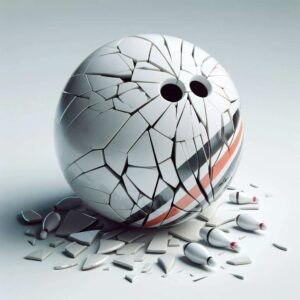For many women, the news of pregnancy brings a mix of excitement and apprehension. As the body goes through changes, expecting mothers often have concerns about the activities they can safely continue. One common question that arises is whether bowling during pregnancy could potentially lead to miscarriage.
While bowling can be a fun and social activity, the twisting motion and physicality involved have led some expecting moms to wonder if it’s safe for their developing baby.
Unfortunately, there is limited definitive medical research specifically on the impact of bowling during pregnancy. However, by exploring potential risks, taking precautions, and consulting with healthcare professionals, women can make informed decisions about whether to continue or pause their bowling hobby.
In this comprehensive guide, we’ll dive deep into the topic of bowling and miscarriage risk. We’ll examine the potential concerns, provide safety tips and precautions, and gather expert advice to help expecting mothers make the best choices for their unique circumstances.
Potential Risks of Bowling During Pregnancy:
While bowling may seem like a relatively low-impact activity, there are a few potential risks to consider when participating during pregnancy.
Increased Abdominal Pressure and Trauma:
The twisting motion involved in bowling can put a strain on the abdominal muscles and ligaments. This twisting motion, combined with the weight of a bowling ball, could potentially cause increased pressure or trauma to the abdomen. As the uterus grows during pregnancy, any significant pressure or impact on the abdominal area is a concern.
Strain on Abdominal Muscles and Ligaments:
Bowling involves the use of core and abdominal muscles to execute a smooth, controlled swing. As pregnancy progresses, these muscles and ligaments become increasingly stretched and strained. Engaging in activities that place additional stress on these areas could potentially lead to discomfort, pain, or even injury.
Potential for Falls or Slips:
Bowling alleys can be slippery, especially in areas where oils or conditioners are used on the lanes. Expecting mothers may have a slightly altered center of gravity and balance as their bodies change, which could increase the risk of falls or slips. Any fall or impact, even a minor one, is a concern during pregnancy.
General Fatigue and Exertion:
Bowling, like any physical activity, can lead to fatigue and exertion. As pregnancy progresses, many women experience increased fatigue and may have lower energy levels. Engaging in activities that cause excessive exertion or tiredness could be problematic, as rest and reducing stress are essential during this time.
Precautions and Safety Tips:
If you’re an expecting mom who enjoys bowling and wants to continue participating, there are several precautions and safety tips to keep in mind:
Consult with Your OB/GYN:
Before continuing or starting bowling during pregnancy, it’s crucial to consult with your obstetrician or gynecologist (OB/GYN). They can provide personalized advice based on your specific health history, stage of pregnancy, and any underlying conditions. Follow their guidance on whether bowling is safe for you and when it may need to be avoided or limited.
Proper Bowling Technique:
If your healthcare provider approves you to bowl during pregnancy, be sure to use the proper technique to reduce the strain on your abdominal muscles. Keep your shoulders square to the target instead of twisting your torso. This will help minimize the twisting motion and reduce the potential for abdominal trauma.
Use Ball Ramps or Aids:
Many bowling alleys offer ball ramps or other aids to help release the ball without the need for bending or twisting. Using these aids can significantly reduce the strain on your abdominal muscles and ligaments, making the activity safer during pregnancy.
Wear Proper Bowling Shoes:
Invest in a pair of bowling shoes with good traction to help prevent slips or falls on the bowling alley floor. Falls, even minor ones, can be a serious concern during pregnancy, so prioritize safety and stability.
Stay Well Hydrated and Avoid Overexertion:
Drink plenty of water before, during, and after bowling to stay hydrated. Avoid overexerting yourself by taking breaks as needed and listening to your body’s signals. If you start to feel fatigued, dizzy, or uncomfortable, it’s time to stop and rest.
Listen to Your Body:
Every pregnancy is different, and it’s essential to pay attention to your body’s cues. If you experience any discomfort, pain, or concerns while bowling, discontinue the activity immediately and consult with your healthcare provider.
Expert Advice:
To gain a deeper understanding of the potential risks and safety considerations, we spoke with several medical experts, including OB/GYNs, sports medicine specialists, and physical therapists.
Dr. Sarah Thompson, an OB/GYN with over 15 years of experience, shared her perspective on the topic:
“While bowling may seem like a relatively low-impact activity, the twisting motion involved and the weight of the bowling ball could potentially put strain on the abdominal muscles and ligaments during pregnancy. This strain, combined with the risk of falls or slips on the bowling alley floor, raises some concerns. However, every pregnancy is unique, and the specific risks depend on factors like the stage of pregnancy, the mother’s fitness level, and any underlying health conditions.”
Dr. Thompson emphasized the importance of open communication with healthcare providers:
“I always recommend that my patients consult with me before continuing or starting any physical activity during pregnancy. I can provide personalized advice based on their individual circumstances and guide them on when bowling may need to be avoided or limited. For example, I may advise against bowling in the third trimester when the risk of abdominal trauma is higher due to the size of the baby.”
Dr. Michael Garcia, a sports medicine specialist, offered his perspective on safer alternatives:
“If there are concerns about the potential risks of bowling during pregnancy, I typically recommend low-impact activities that minimize the risk of falls or abdominal strain. Activities like walking, swimming, or prenatal yoga can be excellent options for maintaining fitness and well-being without putting excessive stress on the body.”
Physical therapist Sarah Johnson provided additional guidance on proper technique:
“If a woman chooses to continue bowling during pregnancy, it’s essential to use proper form to reduce the strain on the abdominal muscles and ligaments. Keeping the shoulders square to the target and avoiding excessive twisting of the torso can help minimize the potential risks. Using ball ramps or aids can also significantly reduce the need for bending or twisting.”
Conclusion:
In conclusion, the decision to continue bowling during pregnancy is a personal one that should be made in consultation with healthcare professionals.
While there are potential risks to consider, such as increased abdominal pressure and strain, the risk of falls or slips, and general fatigue or exertion, taking proper precautions and following expert advice can help mitigate these concerns.
Every pregnancy is unique, and it’s essential for expecting mothers to listen to their bodies and follow the guidance of their OB/GYN. If any discomfort, pain, or concerns arise while bowling, discontinue the activity immediately and consult with a medical professional.
Open communication with healthcare providers is crucial. They can provide personalized advice based on individual circumstances and guide women on when bowling may need to be limited or avoided altogether, such as in the later stages of pregnancy or if there are underlying health conditions.
Ultimately, the key takeaway is that while bowling may not pose a significant risk to all expecting mothers, it’s essential to prioritize safety and well-being during pregnancy.
Consulting with healthcare professionals, taking precautions, and being mindful of your body’s signals can help ensure a healthy and enjoyable pregnancy.
Frequently Asked Questions
Is bowling safe in early pregnancy?
The safety of bowling in early pregnancy depends on several factors, including the individual’s health history, stage of pregnancy, and ability to maintain proper form. Consulting with an OB/GYN is essential to get personalized advice. Generally, the risks of abdominal trauma and falls are lower in the first trimester, but precautions like using ball ramps and avoiding excessive twisting are still recommended.
Can jumping while pregnant cause miscarriage?
Jumping during pregnancy, particularly in the later stages, can increase the risk of miscarriage or placental abruption (separation of the placenta from the uterine wall). High-impact activities and sudden jarring motions should be avoided after the first trimester to minimize the risk of trauma to the abdomen.
Can bumpy roads cause miscarriage in early pregnancy?
While occasional bumps or a slightly bumpy road are unlikely to cause miscarriage in early pregnancy, repeated exposure to significant shaking or jarring motions could potentially increase the risk. It’s best to avoid prolonged travel on very rough roads, especially in the later stages of pregnancy when the baby is larger and more susceptible to trauma.
What injury can cause miscarriage?
Any injury that results in significant trauma to the abdomen, such as a car accident, fall, or direct blow to the stomach, can potentially cause miscarriage. Placental abruption, which can be triggered by trauma, is a leading cause of miscarriage and requires immediate medical attention.
Can you go bowling 8 weeks pregnant?
At 8 weeks pregnant, the risks associated with bowling are generally lower than in later stages of pregnancy. However, it’s still important to consult with an OB/GYN to get personalized advice based on your individual circumstances. If approved, use proper form, avoid excessive twisting, and prioritize safety to minimize potential risks.
What is not allowed in early pregnancy?
In early pregnancy, it’s advisable to avoid activities or substances that could potentially harm the developing fetus, such as smoking, drinking alcohol, consuming unpasteurized dairy products, engaging in high-impact sports or activities with a risk of falls, and exposure to toxic substances or radiation.
What happens if I squeeze my stomach while pregnant?
Squeezing or applying significant pressure to the abdomen during pregnancy is not recommended, as it could potentially cause harm to the developing fetus. Squeezing the stomach could increase the risk of placental abruption, premature labor, or trauma to the baby. It’s essential to be gentle and avoid any direct impact or excessive pressure on the abdomen.
How can I confirm a miscarriage at home?
There is no reliable way to confirm a miscarriage at home. If you suspect a miscarriage due to symptoms like bleeding, cramping, or a lack of pregnancy symptoms, it’s essential to contact your healthcare provider immediately. They will likely request an ultrasound or blood test to confirm the status of the pregnancy and provide appropriate medical care and support.
What happens if you jump in early pregnancy?
Jumping or participating in high-impact activities in early pregnancy can increase the risk of placental abruption or trauma to the developing fetus. While the risks are generally lower in the first trimester, it’s still advisable to avoid activities that involve significant jarring motions or potential for falls or impacts to the abdomen.





